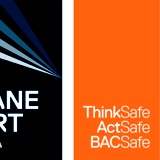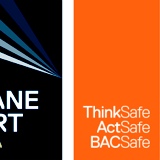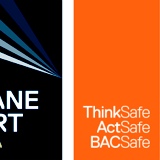Information
-
Area Inspected
-
Conducted on
-
HSR Name
-
Location
General Working Environment
-
Risk Information
All workers are entitled to be provided with a healthy and safe work environment. This can include ensuring that:
- there is sufficient space for, and easy access to equipment, storage areas and workstations;
- heavy and commonly used items are stored between mid-thigh and shoulder-height;
- there is easy access to lunch rooms, toilets and drinking water;
- equipment such as photocopiers and tea facilities are located in a suitable area to minimise disruption to other workers;
- lighting does not create glare or shadow on computer screens;
- office equipment generates minimal noise and is positioned in well-ventilated areas;
- adequate air-conditioning systems are provided and maintained (e.g. keep the air temperature as even as possible). -
Does the layout of the workplace allow people to enter, exit and move about without risk to health and safety, both under normal working conditions and in an emergency?
-
Are floors, stairways and stairwells clear of rubbish, materials and equipment (including electrical leads, etc)?
-
Do work areas have space for work to be carried out without risk to health and safety?
-
Are floor surfaces maintained in a good condition to prevent risks of slips, trips and falls?
-
Is there sufficient light to allow workers to carry out work safely?
-
Are workplace facilities (toilets, kitchens, etc) in good working order and clean, safe and accessible?
-
Is WHS information (including emergency information such as evacuation maps and names of First Aid Officers and Wardens) clearly posted?
Emergency Response/Fire Fighting Equipment
-
Risk Information
Emergency response equipment is often the first line of defence, and it is essential that the correct equipment is appropriately located and maintained. -
Are fire extinguishers/hoses located in easy-to-see locations and appropriate for the work environment?
-
Have fire extinguishers been inspected/tagged within the last 6 months?
-
Are fire extinguishers/hoses free from obstructions?
-
Are emergency instructions displayed and are these easy to understand (e.g. appropriate and lit exit signage)?
-
Are exit corridors and doors clear of obstructions (including external to the building)?
Electrical
-
Risk Information
BAC buildings are protected by Residual Current Devices (circuit breaker), however it is important that electrical hazards in work areas are noted and eliminated/minimised as soon as possible. BAC does not allow the use of double adapters or piggyback plugs. Powerboards may be used, but need to have an in-built circuit breaker. -
Is the area free of any broken plugs, sockets or switches, or frayed or damaged electrical cords?
-
Is the area free of double adaptors or piggyback plugs?
Plant Safety
-
Risk Information
Many BAC buildings contain items of plant (lifts, escalators, travelators, cranes, etc). BAC is required to ensure these are without risk to workers and other persons (other airport workers and members of the public). -
Are all items of plant adequately guarded/protected to prevent contact, entanglement or damage?
-
Are PPE requirements, warning signs and safe work procedures clearly visible?
Hazardous Chemicals
-
Risk Information
-
Are all chemicals stored appropriately (i.e. away from public access), labelled and SDS's available in the immediate vicinity of the storage area?
Other Comments
-
Enter any additional items not addressed above.
Corrective Actions
-
Enter any actions taken, or yet to be taken, in relation to potential hazards or risks identified above. Where possible, identify the person responsible for ensuring the corrective action is completed.
-
Health and Safety Representative Signature








